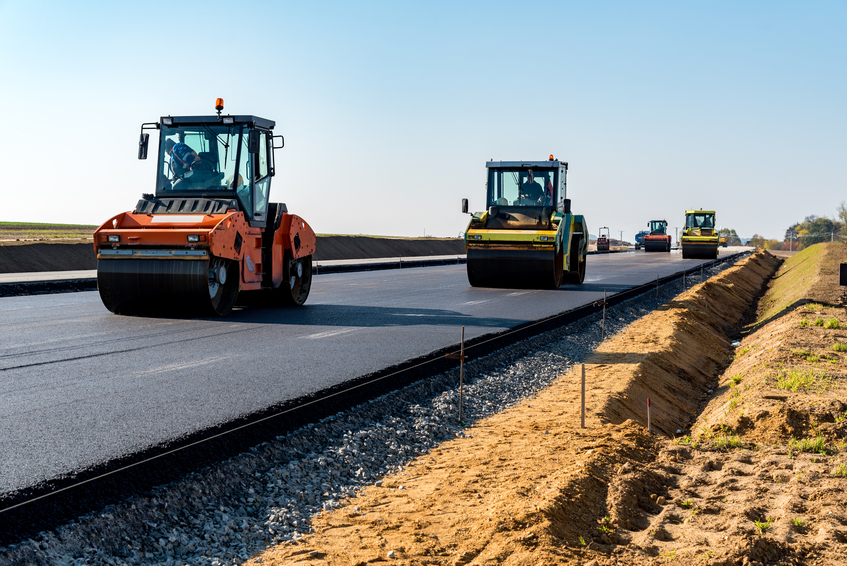Iowa Geotechnical 10 PDH Discount Package 2
Selecting and Accommodating Inflow Design Floods for Dams (C04-055)
Vegetation Management at Levees, Floodwalls and Dams (C03-037)
Tunnel Operations, Maintenance, Inspection, and Evaluation Manual: Evaluation (C02-073)

This online engineering PDH course presents a study that addresses various aspects of geosynthetic durability to develop procedures that could be used to predict long-term strength losses of geosynthetics used in highway applications. These procedures are essential to designers for allowing tensile capacity for geosynthetics used primarily in mechanically stabilized earth (MSE) retaining walls, reinforced soil slopes, and foundation stabilization.
This study was initiated to allow voiced concerns that stress-cracking potential was not being considered in developing the allowable tension load capacity for design when using high-density polyethylene (HDPE) geogrids. Stress cracking is a potential mode of failure occurring in thermoplastic materials that are under a sustained stress significantly lower than the material’s room temperature yield strength, resulting in quasi-brittle fracture of the material. This is also known as slow crack growth and environmental stress cracking (ESC) when in contact with certain aqueous solutions.
This 1 PDH online course is applicable to all civil engineers, highway design professionals, transportation planners, material manufacturers and all personnel interested in learning about geosynthetics for highway applications.
This PE continuing education course is intended to provide you with the following specific knowledge and skills:
- Developing testing protocols necessary to quantify any strength reduction due to aging or stress mechanisms for geosynthetics
- Developing testing protocols for confined stress-strain testing, which could more accurately characterize key engineering properties
Upon successful completion of the quiz, print your Certificate of Completion instantly. (Note: if you are paying by check or money order, you will be able to print it after we receive your payment.) For your convenience, we will also email it to you. Please note that you can log in to your account at any time to access and print your Certificate of Completion.

This online engineering PDH provides basic guidelines for selecting and accommodating inflow design floods for dams based on current and accepted practices.
Appropriate selection of the Inflow Design Flood is the first step in evaluating and designing a dam to address hydrologic potential failure modes and reduce risks to the public. Existing guidelines of most state and federal agencies for evaluating the hydrologic safety of dams were written in the late 1970s. Since that time, significant technological and analytical advances have led to better watershed and rainfall information, improvements in the analysis of extreme floods, greater sophistication in means to quantify incremental dam failure consequences, and tools for evaluating hydrologic events in a risk-based context.
This 4 PDH online course is applicable to geotechnical and civil engineers, dam owners or regulators, and other technical personnel interested in gaining a better knowledge on inflow design floods for dams.
This PE continuing education course is intended to provide you with the following specific knowledge and skills:
- Learning about the dam classification system
- Understanding the guidelines for selecting the inflow design flood
- Learning about spillway characteristics (mainly controlled versus uncontrolled)
- Familiarizing with routing the inflow design flood
- Familiarizing with freeboard requirements
- Defining terminology and acronyms associated with the overall scope of the course
Upon successful completion of the quiz, print your Certificate of Completion instantly. (Note: if you are paying by check or money order, you will be able to print it after we receive your payment.) For your convenience, we will also email it to you. Please note that you can log in to your account at any time to access and print your Certificate of Completion.

This online engineering PDH course provides guidelines to assure that landscape planting and vegetation management provide aesthetic and environmental benefits without compromising the reliability of levees, floodwalls, embankment dams, and appurtenant structures. The dimensions of the vegetation-free and root-free zones defined in this document provide the minimum acceptable buffer between vegetation and flood damage reduction structures.
This 3 PDH online course is intended for civil and hydraulic engineers involved with the design and maintenance of levees, floodwalls, embankment dams, and appurtenant structures.
This PE continuing education course is intended to provide you with the following specific knowledge and skills:
-
Learning about proper landscape planting: objectives and engineering requirements
-
Understanding the need for vegetation-free zone and vegetation-management zone
-
Understanding the areas of concern involving root impacts and root-free zone
-
Learning about treatment of levees, floodwalls, embankment dams, and other structures
-
Learning about feasibility analysis, planting berms, planters and irrigation systems
-
Learning about flood-fighting and structure maintenance
-
Understanding the goals of plant material selection and planting maintenance
-
Understanding the purpose of appropriate ground cover in the vegetation-free zone
-
Learning how to treat borrow sites and spoil sites
-
Learning about vegetation-related maintenance and repair
-
Deciding when removal of non-compliant vegetation is appropriate
In this professional engineering CEU course, you need to review the U.S. Army Corps of Engineers Technical (USACE) Letter No. 1110-2-583, "Guidelines for landscape planting and vegetation management at levees, floodwalls, embankment dams, and appurtenant structures", dated April 10, 2009.
Upon successful completion of the quiz, print your Certificate of Completion instantly. (Note: if you are paying by check or money order, you will be able to print it after we receive your payment.) For your convenience, we will also email it to you. Please note that you can log in to your account at any time to access and print your Certificate of Completion.

This engineering online PDH course will provide an overview on the evaluation of tunnel systems and the associated components. The components explored in this chapter include the typical personnel involved, supplemental inspection and testing methods, risk-based assessments, priority classification, and basic cost estimating. Information is also provided on load rating.
Evaluations are normally performed after the inspection data is received. Sound engineering judgment is used to evaluate the consequences of tunnel system or component failure in terms of overall safety, service level, and costs. In some instances, supplementary inspections and testing may be needed where data is lacking. Risk assessment techniques should include strategies for deploying, operating, maintaining, upgrading, and disposing of tunnel system components in a cost-effective manner.
This 2 PDH online course is applicable to civil and structural engineers, as well as design and construction personnel involved with the evaluation process of tunnel systems.
This PE continuing education course is intended to provide you with the following specific knowledge and skills:
- Understanding the evaluation criteria and methods of tunnel systems
- Identifying the typical personnel involved in tunnel evaluation procedures
- Familiarization with different testing methods
- Understanding risk-based assessments
- Recognizing priority classification
- Understanding the basics of cost estimating
Upon successful completion of the quiz, print your Certificate of Completion instantly. (Note: if you are paying by check or money order, you will be able to print it after we receive your payment.) For your convenience, we will also email it to you. Please note that you can log in to your account at any time to access and print your Certificate of Completion.